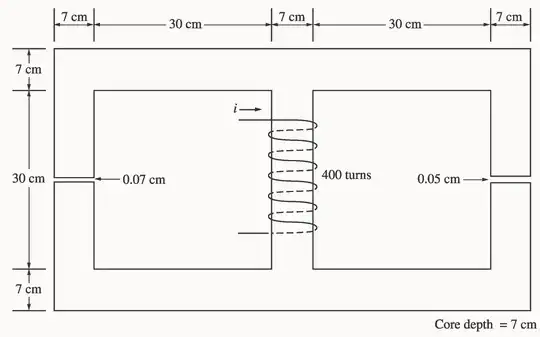I have the following magnetic circuit problem:
For the left hand core, the mean path length calculated in the solution manual is 1.11m. However what I don't understand is, why is the length of the air gap included? Don't you have to subtract the air gap length from the total length of the core?

Thanks
– hacker804 Oct 08 '16 at 09:53